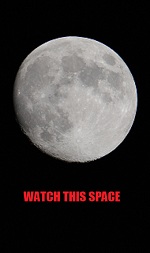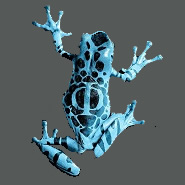First up is a 3 and a half minute excerpt from the SciFi (SyFy) network’s coverage of the event, recently posted by Easynow at the notorious YouTube. I have seen this footage of Rod Dickinson’s through the years and I feel it is authentic… footage of what is the obvious question. Bill George, an Academy Award-winning visual effects master at Industrial Light and Magic is consulted within and he can’t, of course answer that question – however he also feels that it is genuine and unaltered.
And finally we have an excellent video response of 4 and a quarter minutes to Easynow’s excerpt from our friend LunaCognita – wherein the film is stabilized on the discordantly discoidal nodule and enhanced, lending we the curious a very nice view of it indeed. Props, Luna!
Happy viewing to all…
eeasynow | July 08, 2010no description available
LunaCognita | July 08, 2010This particular segment (or segments, rather) of footage we will be looking at in this presentation involves a UFO sighting that occurred on July 4th, 1998 just outside of the town of Somerset in southwest England, filmed by a man named Rod Dickinson.
As always, the enhancements shown here were built from the highest quality copy of the source footage that I was able to obtain. Unfortunately in this case, I was not able to acquire a complete unedited copy of the raw Somerset footage to work with, and it is my understanding that Mr. Dickinson is no longer in possession of the original raw tape. This forced me to use a segmented copy taken from a UFO documentary in which the raw footage had already been broken apart and edited into several short highlight clips. This fact has most definitely negatively influenced the quality and quantity of visual data available for enhancement.
As you will see, the raw footage of this UFO encounter clearly suffers from significant camera shake/instability issues. In fact, I have to say that this is the shakiest, most unstable UFO video footage I have ever personally analyzed. These already brutal instability issues are further magnified by the fact that the raw copy of the footage I was forced to use as the Alpha source file appears to have been subjected to some level of video compression, which, thanks to the brutal amount of shake, creates significant interpolation blurring and frame “ghosting” being introduced/amplified. This effect is blatantly apparent in every copy of this Dickinson/Somerset UFO footage I have ever seen, and the copy I used as the Alpha source file for this presentation is no exception, with a high number of raw frames showing both the actual UFO as well as a second “ghost” of the UFO visible in the same frame, offset 180 degrees opposite of the direction of shake travel.
Just to give you a better idea of how detrimental this ghosting effect was to the stabilization process here, in the segments of footage I show labeled as “Sequence#1” and “Sequence#4”, roughly 50% of the frames had to be eliminated from the stabilization process due to being ruined by blurring and/or ghosting effects. “Sequence#3” was even worse, with close to 70% of the raw frames being garbage and unusable for the same reasons. Still, even with those significant negative factors working against the stabilizing process, I still considered this footage interesting enough to warrant the effort involved in trying to improve the viewability of the scene.
Also, please keep in mind that the term “UFO” does not mean “a spaceship flown by aliens”. It means “Unidentified Flying Object” – an object that is visible in the sky that cannot be positively identified as a known object of terrestrial origin. There is simply no way for us to tell from this footage just what this object is, where it came from, how it got there, or where it went afterwards. By definition, that makes it a “UFO”.
Cheers everyone, and I hope you enjoy this presentation!
LunaCognita
lunacognita@gmail.com















































 What’s All This, Then? is copyright © 2009 to the present by Ignatius F Makarevich - All rights reserved worldwide.
What’s All This, Then? is copyright © 2009 to the present by Ignatius F Makarevich - All rights reserved worldwide.


